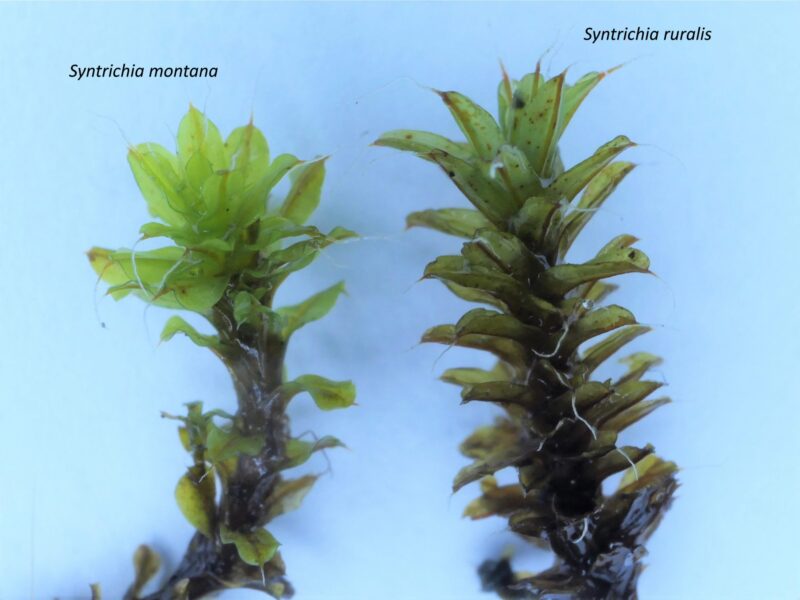Identification notes
Syntrichia montana is readily recognised as belonging to the genus Syntrichia with its obtuse leaves and hyaline hair points. It is a common plant on limestone and in basic manmade habitats forming neat and relatively large handsome cushions on walls and masonry, and wider patches on horizontal concrete and tarmac. When dry it is not so obvious as the leaves become twisted, shrivelled, and grey but when moist the usually bright green leaves form obvious rosettes at the ends of the stems. It is much more robust than Tortula muralis which also has a hyaline hairpoint and an obtuse leaf, but is smaller, narrower and unlike S.montana is recurved to the apex.
Despite its familiarity, care is needed to differentiate it from several other similar species. It can occur as an epiphyte, especially in urban areas, when it can be confused with S.laevipila. The leaf shape is similar but S.laevipila has an essentially smooth hair point whereas S.montana has a spinose one. Syntrichia ruralis is another closely related species that can cause confusion and is found in similar habitats. The three most obvious morphological differences are that in S.ruralis the leaf shape is usually recurved, they are spathulate in shape with no narrowing in mid leaf, and the margins are usually recurved into the top third of the leaf, and often to the apex. This can give the appearance of a slight folding and tapering of the leaf when viewed in situ. In S.montana the leaves are patent/spreading and usually straight and flat, with a waist or narrowing at the middle of the leaf, and a less strongly recurved leaf margin extending to just beyond midleaf. If there is doubt then a nerve section should show hydroids in S.montana and a thick layer of 5-9 stereids. Hydroids are angular thin-walled water-conducting cells which occur in a patch between the guide cells and the steroids but are not always easy to see. S.ruralis does not have them and has a layer of 2-3 stereids, so the nerve is thinner. S.virescens is smaller, usually epiphytic, is not narrowed at mid leaf and has shorter basal cells and only 1-2 layers of stereids in the nerve section.
There is a var.calva which has a small excurrent nerve rather than a hair point.
Read the Field Guide account
















